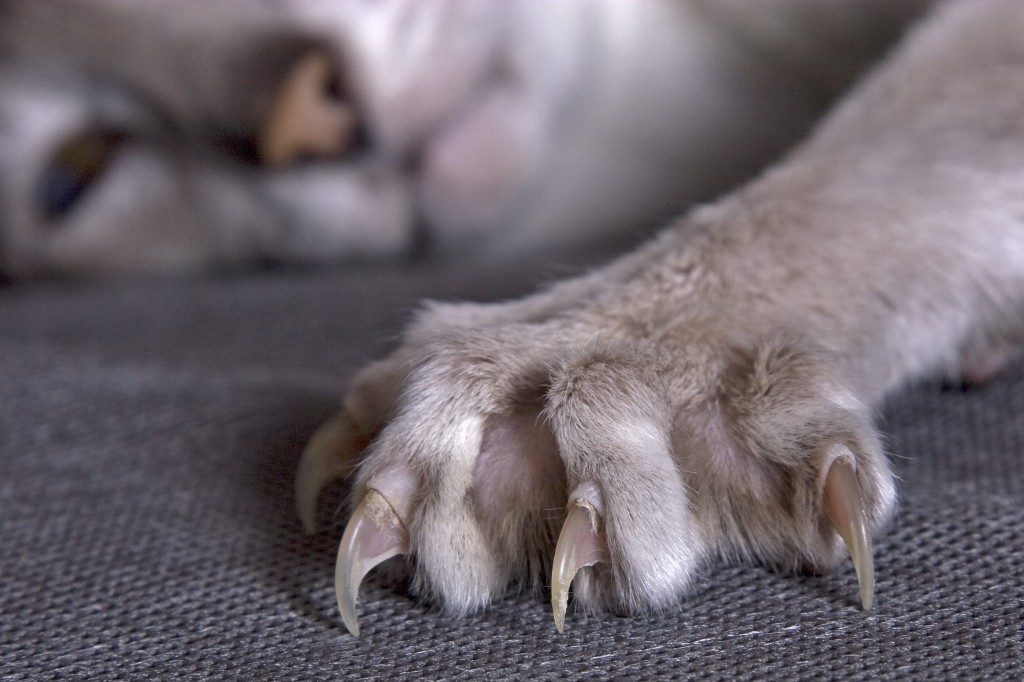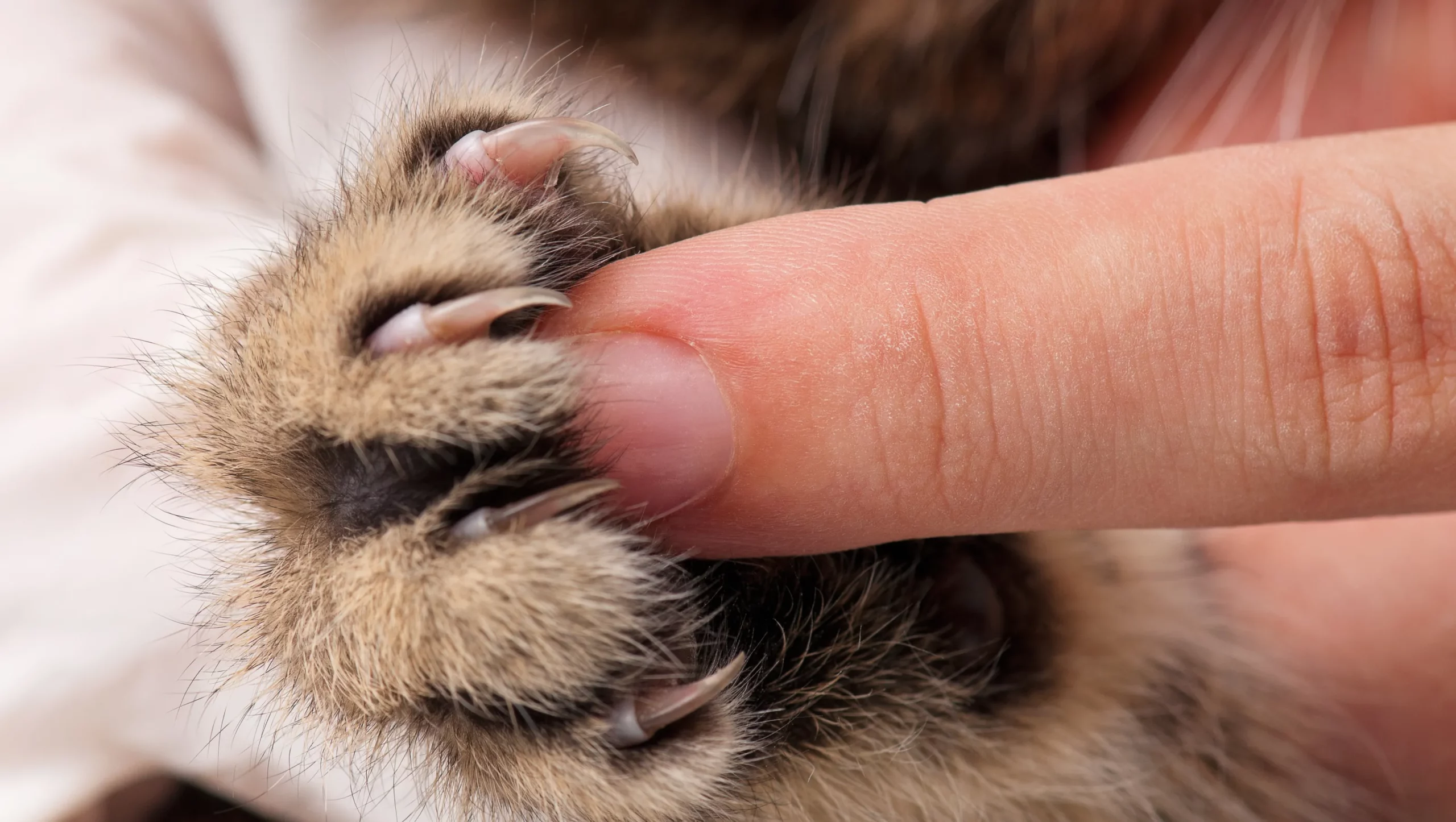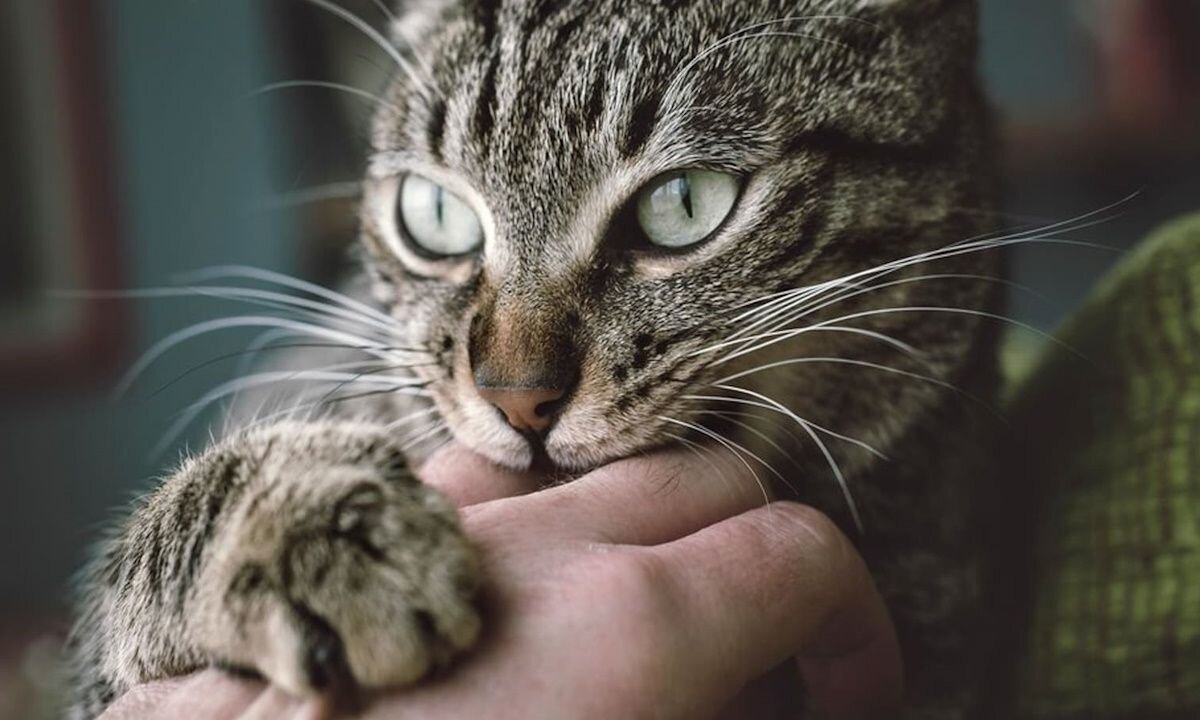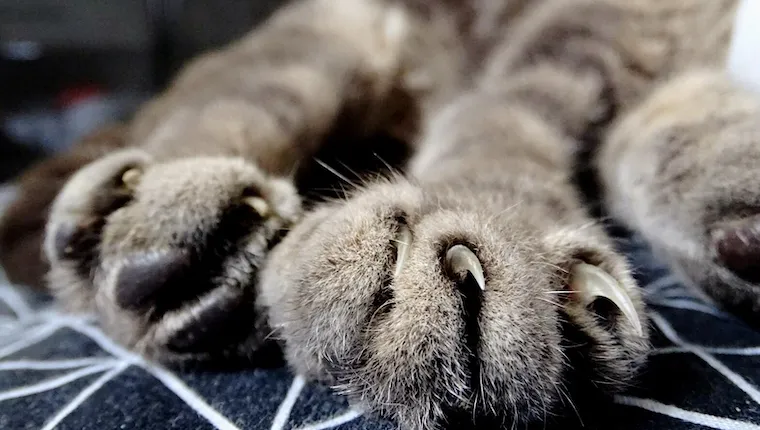Background on Declawing Practices
The Current State of Declawing Laws in Virginia

Declawing, also known as onychectomy, is a surgical procedure that involves amputating a cat’s toes and removing the claw-bearing bone. The practice has been widely debated in recent years due to concerns over animal welfare and pain management.
The procedure was once commonly performed as a way to prevent cats from scratching furniture or other household items. However, veterinarians and animal welfare organizations have increasingly spoken out against declawing, citing the potential for chronic pain, infection, and long-term health complications in cats.
Many countries, including the UK, Australia, and several European nations, have banned declawing outright. In these jurisdictions, cat owners are encouraged to use alternative methods of preventing scratching damage, such as providing scratching posts or pads.
In the United States, however, declawing remains a widely accepted practice. Some states, including New York, California, and Oregon, have implemented laws regulating the procedure, but Virginia does not currently have specific legislation governing declawing.
The Current State of Declawing Laws in Virginia
There are no state or federal laws in Virginia that specifically regulate or prohibit declawing. However, veterinary boards and professional organizations can provide guidance on the procedure’s ethics and best practices.
While there is no specific law in Virginia prohibiting declawing, some animal welfare advocates argue that veterinarians have a moral obligation to prioritize their patients’ welfare. Many veterinarians in Virginia now offer alternative methods for addressing cat scratching behavior, such as nail caps or trimming.
Virginia Animal Rights Supporters Push Bill To Criminalize Declawing Cats
Some animal rights supporters are pushing for legislation that would criminalize declawing cats in the state. The proposed bill aims to establish Virginia as a leader in animal welfare by protecting cats from unnecessary and potentially painful procedures.
Key Provisions of the Proposed Bill:
Ban on Declawing for Non-Medical Reasons: The bill would prohibit veterinarians from performing declawing surgeries on healthy cats, except in cases where there is a medical necessity.
Penalties for Veterinarians: Violators could face fines and disciplinary action, including revocation of their veterinary license.
Education and Counseling: The bill would require veterinarians to inform clients about the risks associated with declawing and provide education on alternative methods for preventing cat scratching behavior.
The proposed legislation has sparked a lively debate in Virginia, with some arguing that it is essential to prioritize animal welfare and others claiming that it is an overreach by government into private veterinary practice. The bill’s fate remains uncertain at this time.
Cats are being declawed for a variety of reasons, including convenience, perceived behavioral issues, or medical conditions.
Cats have been a source of companionship and affection for humans for thousands of years, but despite their many endearing qualities, they are often subjected to declawing procedures. This practice, which involves the surgical removal or amputation of a cat’s claws, has been widely accepted as a means of addressing various issues related to feline behavior and health.
However, recent efforts by animal rights supporters in Virginia have led to a push for legislation that would criminalize declawing cats. This effort is part of a growing movement worldwide to reconsider the ethics and necessity of this procedure. At its core, the debate surrounding declawing centers on concerns about animal welfare, the risks associated with surgery, and the impact it can have on a cat’s behavior and quality of life.
One of the primary reasons for declawing cats is convenience. Many pet owners see the procedure as a means of preventing damage to their furniture or avoiding scratching injuries from their pets. However, proponents of animal welfare argue that this is an anthropocentric view, prioritizing human concerns over the needs and well-being of the cat.
Another common reason for declawing is perceived behavioral issues. Some owners believe that their cats are exhibiting destructive behavior due to scratching or aggression, and that declawing will alleviate these problems. However, this approach fails to address the underlying causes of such behaviors, which can be rooted in anxiety, stress, or boredom.
Medical conditions can also necessitate declawing in some cases. For example, cats with arthritis or other musculoskeletal disorders may require surgery to alleviate pain and discomfort. In these instances, declawing might be deemed necessary as a means of improving the cat’s quality of life.
The push for legislation to criminalize declawing in Virginia is driven by concerns about animal welfare and the potential risks associated with this procedure. Many veterinarians now recommend alternative methods for addressing scratching behavior, such as providing scratching posts or pads and redirecting the cat’s attention towards more acceptable outlets.
Advocates argue that declawing can have long-term consequences for a cat’s health and well-being. These include chronic pain, arthritis, and increased risk of infections and other complications. Furthermore, many cats may experience anxiety or stress after undergoing the procedure, which can manifest in changes to their behavior.
Given these concerns, it is not surprising that efforts are underway to regulate and limit declawing practices. By pushing for legislation that would criminalize this procedure, advocates aim to raise awareness about the importance of animal welfare and promote more humane and compassionate approaches to addressing feline behavioral issues.
The debate surrounding declawing serves as a reminder of the complex relationships between humans and animals. It highlights the need for a more nuanced understanding of our responsibilities towards non-human species and encourages us to rethink our practices in light of emerging knowledge about animal behavior, cognition, and welfare.
The American Veterinary Medical Association (AVMA) has taken the stance that declawing should only be performed as a last resort and with consideration of alternative methods to address underlying behavioral or health concerns.
The practice of declawing cats has been a topic of controversy among animal welfare advocates and veterinarians for many years.
Declawing, also known as onychectomy, involves the surgical removal of a cat’s claws, typically performed through a procedure that amputates the end bones of the toes.
The American Veterinary Medical Association (AVMA) has taken a stance on declawing, stating that it should only be performed as a last resort and with consideration of alternative methods to address underlying behavioral or health concerns.
The AVMA’s position is based on the understanding that declawing can lead to complications and pain for cats, including infection, nerve damage, and arthritis in the joints of the toes.
Additionally, the AVMA notes that there are alternative methods available to address scratching behavior, such as providing scratching posts and pads, using deterrents like double-sided tape or aluminum foil on surfaces, and teaching cats to scratch in acceptable areas.
The organization also recommends exploring behavioral interventions, such as positive reinforcement training, to modify a cat’s scratching behavior without resorting to declawing.
Many veterinarians and animal welfare organizations now view declawing as a drastic measure that should only be considered when other alternatives have failed, and even then, only after weighing the potential risks and benefits for the individual cat.
Reasons Against Declawing
Surgical complications: Infection, nerve damage, and arthritis in the joints of the toes
Pain and discomfort: Cats may experience chronic pain and discomfort after declawing surgery
Behavioral problems: Declawing can lead to behavioral issues, such as increased aggression and anxiety
Lack of necessity: Many experts agree that there are alternative methods available to address scratching behavior without resorting to declawing
The Controversy in Virginia
As reported by various news sources, animal rights supporters in Virginia have been pushing for a bill to criminalize the practice of declawing cats.
The proposed legislation aims to protect cat owners from veterinarians who may recommend declawing as a solution to scratching behavior without exploring alternative methods first.
Supporters argue that declawing is an unnecessary and inhumane procedure that can lead to significant pain and distress for cats.
The bill is currently being reviewed by lawmakers, and the outcome remains uncertain at this time.
Key Provisions of the Proposed Bill
Criminalizing Declawing Without Justification

The proposed bill aims to criminalize declawing cats unless deemed medically necessary by a licensed veterinarian, marking a significant shift in animal welfare policy in the state of Virginia.
According to the legislation, it will be unlawful for any person to perform or cause to be performed an onychectomy (declawing) procedure on a cat unless the procedure is done as a result of a medical necessity that cannot be met through alternative treatments or behavioral interventions.
The proposed law defines “medical necessity” as a condition requiring declawing to prevent severe pain, suffering, or distress to the cat; to protect human health and safety; or to address a feline disease or injury affecting the cat’s quality of life.
Under this bill, licensed veterinarians will be responsible for evaluating whether a medical justification exists for performing an onychectomy procedure on a cat.
A key aspect of the proposed legislation is that it introduces provisions aimed at promoting education and awareness about the potential risks associated with declawing, particularly in relation to pain, behavioral issues, and increased susceptibility to certain diseases.
Specifically, the bill mandates that veterinary professionals educate pet owners on the potential consequences and risks related to cat declawing, including alternatives to surgery and the importance of maintaining a safe and healthy environment for cats through spaying/neutering and other measures.
The proposed law also emphasizes the need to establish clear guidelines for identifying situations where medical justification exists for performing an onychectomy procedure on a cat, while promoting non-invasive methods that prioritize animal welfare over convenience or aesthetic preferences.
Supporters of the bill argue that it aligns with Virginia’s commitment to safeguarding animal welfare and promoting responsible pet ownership, recognizing that declawing often causes significant harm to cats without providing substantial benefits for human safety or health.
The proposed bill, supported by Virginia Animal Rights Supporters (VARS), aims to make it an offense for a veterinarian to declaw a cat without proper justification.
The proposed bill, backed by the advocacy group Virginia Animal Rights Supporters (VARS), seeks to make it an offense for a veterinarian to perform declawing procedures on cats without valid medical justification.
Declawing, also known as onychectomy, is a surgical procedure that involves removing or amputating a cat’s claws. While some veterinarians may recommend the procedure for medical reasons, VARS argues that it is often performed unnecessarily and can cause significant pain and suffering for cats.
The bill proposes to establish a clear distinction between medically necessary declawing procedures and non-therapeutic procedures done solely for convenience or cosmetic purposes. This would require veterinarians to provide explicit justification for each declawing procedure, backed by scientific evidence and medical necessity.
VARS is pushing for stricter regulations on declawing practices, arguing that cats have the right to their natural claws as an essential aspect of their welfare and well-being. The group also aims to promote alternative solutions to address behavioral issues, such as scratching posts and behavior modification techniques.
The proposed bill would hold veterinarians accountable for adhering to these new guidelines, with penalties and fines imposed on those who engage in non-therapeutic declawing procedures without valid justification.
While some argue that the bill may pose challenges for cat owners who rely on declawing as a last resort, VARS maintains that the proposed legislation is essential for protecting animal welfare and promoting responsible veterinary practices.
The justification criteria may include situations where the procedure is deemed medically necessary or as a last resort due to documented behavioral issues not resolved through alternative means.
The proposed bill aims to criminalize declawing cats, a procedure that has been widely debated among animal rights supporters and veterinarians in recent years. The key provisions of the bill emphasize the importance of considering alternative methods before resorting to surgical intervention.
Under the proposed legislation, declawing would only be permitted under specific circumstances where it is deemed medically necessary or as a last resort due to documented behavioral issues that have not been resolved through alternative means such as behavior modification or environmental changes.
The bill’s provisions also suggest that veterinarians would need to document and justify each case before proceeding with the declawing procedure. This documentation could include records of attempts made to address behavioral issues using non-surgical methods, as well as a detailed explanation for why other alternatives were deemed insufficient or ineffective.
Moreover, the proposed bill would require veterinarians to provide clients with clear information about the risks and consequences associated with declawing, including potential health complications and pain management strategies. This added layer of transparency aims to ensure that pet owners are fully informed and able to make an educated decision regarding their cat’s care.
In situations where behavioral issues persist despite attempts to address them through alternative means, the bill proposes allowing veterinarians to proceed with declawing as a last resort. However, it also stipulates that this should be done in conjunction with other measures aimed at improving the cat’s welfare and addressing any underlying causes of aggression or destructive behavior.
The justification criteria may include situations where the procedure is deemed medically necessary due to documented health concerns, such as arthritis or nail damage, which can make everyday activities painful for cats. In these cases, declawing might be recommended as a means of alleviating discomfort and improving the cat’s quality of life.
Expert Support and Implications
Acknowledging the Role of Leading Veterinary Organizations
The debate surrounding declawing cats has been a contentious issue for animal rights activists and veterinary professionals alike.
In this regard, expert support plays a vital role in shaping public opinion and informing policy decisions related to the welfare of animals.
Leading veterinary organizations such as the American Veterinary Medical Association (AVMA) and the American Animal Hospital Association (AAHA) have acknowledged the role that declawing can play in perpetuating animal cruelty and have issued statements condemning the practice.
For instance, the AVMA has stated that “declawing should be considered a last resort” and only performed when other alternatives such as behavior modification or nail trimming are deemed ineffective.
The AAHA also recognizes the potential harm associated with declawing, stating that it can lead to chronic pain, arthritis, and behavioral problems in cats.
However, some veterinarians and cat owners argue that declawing is necessary for various reasons such as preventing scratching injuries or alleviating stress caused by aggressive behavior.
This controversy highlights the need for a more nuanced understanding of the complexities surrounding cat welfare and the role that expert support can play in addressing this issue.
Implications of the proposed bill to criminalize declawing cats, if passed, would be significant. It could set a precedent for other states or countries to follow suit and raise awareness about animal welfare concerns related to declawing.
Moreover, it may also spark further debate and discussion among veterinary professionals, policymakers, and the general public about the ethics of declawing and the importance of prioritizing cat welfare in decision-making processes.
The bill’s proponents argue that criminalizing declawing would deter veterinarians from performing this procedure and encourage them to explore alternative methods for addressing scratching behavior or other related issues.
However, detractors argue that such a policy may infringe upon the rights of cat owners and veterinarians who believe that declawing is necessary in certain circumstances. They also raise concerns about the potential consequences of veterinarians being forced to perform this procedure against their professional judgment or that of their clients.
In conclusion, expert support plays a vital role in shaping public opinion and informing policy decisions related to animal welfare. The implications of the proposed bill to criminalize declawing cats are complex and multifaceted, highlighting the need for ongoing debate and discussion about this contentious issue.
Supporters of the bill, including VARS, argue that leading veterinary organizations such as the AVMA are increasingly advocating for a ban on routine declawing procedures.

The Virginia Animal Rights Supporters are pushing a bill to criminalize declawing cats, and experts support this initiative for various reasons.
One of the primary concerns is that routine declawing procedures pose health risks to cats. Many veterinary organizations have started advocating for a ban on these procedures due to the potential complications that can arise from them.
The American Veterinary Medical Association (AVMA) and other leading veterinary organizations are among those calling for an end to routine declawing procedures.
The experts argue that declawing cats is not only unnecessary but also has severe health implications, including chronic pain, infection, and arthritis.
They suggest alternative methods, such as nail caps or scratching posts, which can be effective in managing cat behavior without causing harm to the animal.
The bill aims to raise awareness about the risks associated with routine declawing procedures and provide a safer environment for cats. It also highlights the need for education on responsible pet ownership and cat care.
Supporters of the bill argue that it will not only improve the lives of cats but also lead to better relationships between humans and animals in Virginia.
The initiative demonstrates a growing concern among experts, animal welfare organizations, and pet owners about the well-being of animals and the importance of providing them with humane care.
Implications
Routine declawing procedures pose health risks to cats, including chronic pain, infection, and arthritis.
The bill aims to raise awareness about the risks associated with routine declawing procedures.
Alternative methods, such as nail caps or scratching posts, can be effective in managing cat behavior without causing harm to the animal.
The initiative highlights the need for education on responsible pet ownership and cat care.
The bill demonstrates a growing concern among experts, animal welfare organizations, and pet owners about the well-being of animals and the importance of providing them with humane care.
Supporters of the Bill
VARS (Virginia Animal Rights Supporters)
Leading veterinary organizations such as the AVMA (American Veterinary Medical Association)
Pet owners and animal welfare organizations
The proposal would likely face scrutiny and potential approval from relevant Virginia state government bodies in response to growing public awareness about animal welfare concerns.
The proposed legislation would have significant implications for veterinarians and pet owners in Virginia, particularly with regards to animal welfare concerns.
The bill’s focus on criminalizing declawing procedures raises important questions about the ethics of medical treatments that involve causing harm or pain to animals.
On one hand, proponents of the legislation argue that declawing is a cruel and unnecessary practice that can cause long-term physical and emotional distress for cats.
They claim that the procedure serves no legitimate purpose other than to accommodate human convenience, often at the expense of animal welfare.
The proposal would likely face scrutiny from various stakeholders, including veterinarians, pet owners, and animal welfare organizations, all of whom have strong opinions on the matter.
Veterinarians may argue that declawing is a necessary medical procedure in certain cases, such as to prevent self-mutilation or protect human safety, while others may see it as a last resort that should only be performed under extreme circumstances.
Pet owners may also have differing opinions on the matter, with some supporting the ban due to their own animal welfare concerns and others opposing it out of fear for the impact it could have on their ability to care for their pets.
Animal welfare organizations, meanwhile, would likely welcome the legislation as a step towards reducing unnecessary harm to animals and promoting more humane treatment options.
The Virginia state government bodies responsible for approving the bill would need to weigh these competing interests and consider the potential implications of passing or rejecting the proposal.
This may involve consulting with experts in veterinary medicine, animal behavior, and law enforcement to better understand the complex issues at play.
Ultimately, the outcome of this proposal will depend on a nuanced evaluation of the evidence presented by proponents and opponents, as well as a consideration of the broader social and cultural context surrounding animal welfare concerns.
- Best Lusha Alternatives for 2025 - April 19, 2025
- Best Overloop Alternatives for 2025 - April 19, 2025
- Best Snov.io Alternatives for 2025 - April 18, 2025



